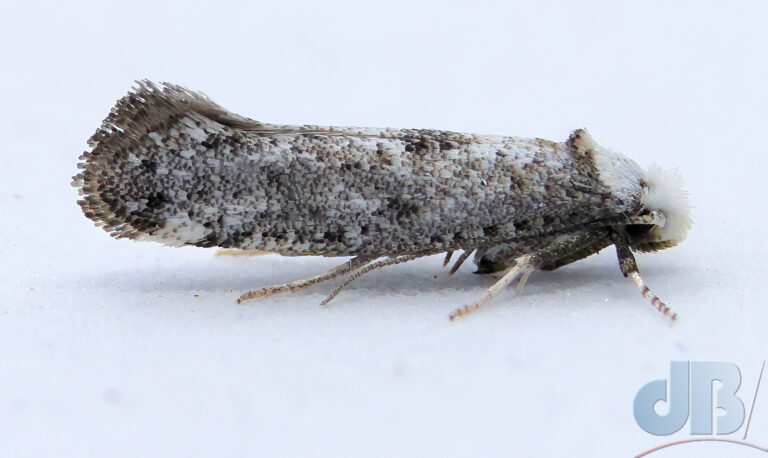This is one of those moths that could be any of half a dozen different species. You cannot know for sure unless you’ve raised it from larvae, done DNA testing, or what the lepidopterists call “gen det”, which is where you dissect the male’s genitalia, which are different across the species…and I’m really not going there! “Gen det” is an abbreviation of “determination by genitalia examination”.

So, we have to record it as a generic member of its genus, or actually in this case two geni:
Swammerdamia/Pseudoswammerdamia sp. Some people might use the term agg. (for aggregated species) instead of sp. (meaning any of a number of species).
The vernacular name for the various species in these two geni is Ermel, so this could be a Birch Ermel, a Rowan Ermel, Little Ermel, a Scotch Ermel etc…
These moths are about 5mm long, so I used a 45mm extension tube to get closer with my macro lens and even then couldn’t fill the frame. Incidentally, while the term micro (meaning small) and macro (meaning large) was perhaps an original division for Lepidoptera, as new species were discovered it was realised that many micros are far bigger than some of the macros and vice versa. Turns out, although these things are never set in stone, that the micro moths are evolutionarily older than the macro moths. The butterflies, which can be very big, are loosely micro moths and sit somewhere in a fork in the family tree.
Shot taken with a mirrorless Canon R7 camera using the onboard focus stacking feature and then a touch of sharpening with Topaz Sharpen AI.